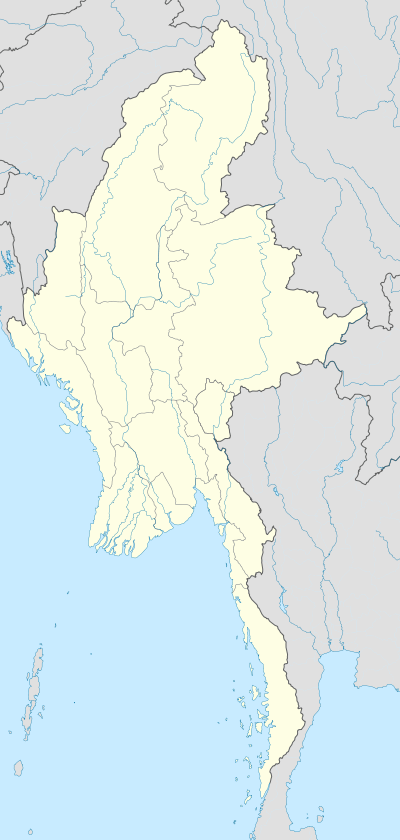Thayet War Cemetery
 Location of Thayetmyo War Cemetery, Burma. | |
| Details | |
|---|---|
| Location | Thayetmyo, Magway Region |
| Country | Burma |
| Coordinates | 19°19′30″N 95°10′59″E / 19.325°N 95.183°E |
| Type | Turkish military of WWI |
The Thayet War Cemetery is one of the two memorial burial grounds of Ottoman soldiers in Burma (Myanmar). It is situated in Thayetmyo, Thayet District of Magway Region in central Myanmar. Ottoman soldiers are buried here, who died after they became prisoner of war in the Middle Eastern theatre of World War I and were sent by British Armed Forces to a labour camp in this country.[1][2][3]
Around twelve thousand soldiers of the Ottoman Army fell into the hands of British Forces during the Sinai, Palestine and Mesopotamian campaigns in the World War I. The Ottoman prisoners of war were transferred to Burma, which was then under British rule. The POW's were forced to work in the construction of railroad, bridge and artificial lake. About 1,600 soldiers died as a result of epidemics, hard physical labour conditions and cruel treatment. It is not known how many of the Ottoman POW's in Burma were able to return home.[1][3]
An inscription at the cemetery denotes the memorial in Burmese and Turkish. Most of the burials in the cemetery are fallen in 1916 as seen on the gravestones.[1]
The cemetery was many years long in a state of neglect. Turkish government's initiatives for maintenance since 1965 accomplished finally in 2012 with granting of the required permission. The maintenance works, commissioned by the Military Cemeteries and Memorials Department (Turkish: Şehitlikler ve Anıtlar Şubesi) of the Ministry of Family and Social Policies, began on January 27, 2013.[2]
See also
References
- 1 2 3 "Myanmar'da Türk Şehitliği'nin akıbeti meçhul". NTV-MSNBC (in Turkish). 2008-05-08. Retrieved 2013-09-29.
- 1 2 "Myanmar Türk Şehitlikleri Yapım Projesi" (in Turkish). Aile ve Sosyal Politikalar Bakanlığı. Retrieved 2013-09-29.
- 1 2 "Yurtdışında en fazla Türk şehitliği nerede?". Haber7 (in Turkish). 2012-11-17. Retrieved 2013-09-29.